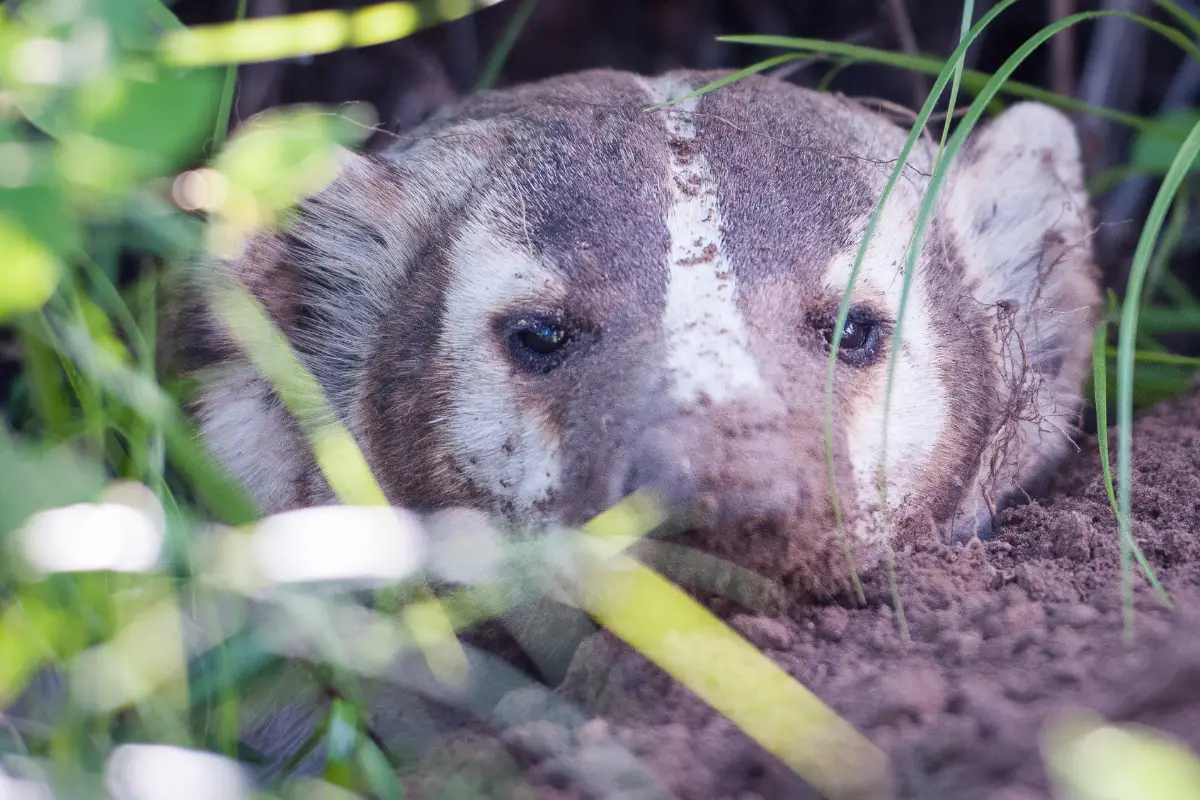I’ve had a few experiences with badgers. They are pretty cool looking, but they can also be fierce.
Recently a farmer from North Texas asked me, “how long do badgers live?” So I figured, let’s talk about it.
A badger’s lifespan can vary depending on a collection of factors, such as predators, environment, and accidental death.
Badgers in the wilderness have an average lifespan of about ten years. Sometimes badgers don’t survive up to a decade because of a poor diet or some other unhealthy condition. In captivity, badgers can live to be 15-20 years old, with access to veterinarian care and a constant supply of food and water.
It is believed that while badgers were once considered an endangered species, their population numbers have been stabilizing in recent years. Part of this is attributed to the fact that badgers have been able to adapt to their surroundings in the wilderness, which has ultimately led to a higher reproductive rate on average for the badger population.
Over the last 40 years, it is estimated that the overall badger population has risen by as much as 90%. There are only a few factors that could contribute to such a drastic increase in such a limited time, one of which is believed to be climate change.

How Long Do Badgers Live in the Wild?
The average lifespan for a badger is approximately one decade in the wilderness. The local environment can have a large impact on whether a specific badger has a longer or shorter lifespan. A healthy diet and a low amount of predators can lead to a longer average lifespan while more predators and a less than ideal diet can lead to exactly the opposite. Source.
See our article for Badger Predators
How Long Do Badgers Live in Captivity?
If a badger is kept in captivity, it can live for a lengthier time. In at least one case, a badger in captivity lived to be 15 and a half years old. In some cases, badgers have been reported to survive up to 20 years in captivity. Wild badgers face much worse odds of surviving this amount of time due to the natural hazards that exist. Source.
Just like most other animals that survive out in the wilderness, it gets tough for badgers to survive as they get older. They can’t move as quickly and their senses slowly get worse with age. They are also more vulnerable to diseases and health issues that could ultimately lead to their death in the wild.
Badgers spend their entire life surviving, reproducing, and building dens for themselves. They are nocturnal animals and spend much of their time hunting for their next meal. Things can get tougher for mother badgers that have to take care of their cubs as well.
Different Stages of a Badger’s Life
Several factors determine a badger’s lifespan and those factors can spread across various stages of its life. We’ll start from the beginning and discuss each stage and how that could contribute to a shorter or longer lifespan when compared to the average badger.
The First 6 Months
Badger cubs will usually stay with their mothers until they are 6 months old. During this time, they will learn the basics about surviving in the wilderness. They will learn about digging and creating dens (called setts,) hunting for food, and adapting to their local environment.
Depending on the type of environment that they are located in, they may develop certain adaptations that allow them to survive better in that specific environment. For example, a badger might be forced to hunt in a specific region of the environment due to a large number of rodents in a certain area.
Transition Period
During the transition period to becoming a mature adult badger, both female and male badgers will already know how to survive in the wilderness.
They will have to rely on their natural instincts and make important decisions on their own without any assistance from their mother. It can take a few weeks or months for badgers to fully get used to being on their own.
Female badgers can start reproducing right as they reach 6 months of age. Male badgers usually have to wait quite a bit longer before they start reproducing and mating. It can take up to 2 years before a male badger starts mating.
The transition period for a badger can be impacted by local environmental conditions. Several factors can all have an impact on this important transition period.
Later Stages of Life
Badgers will eventually start to lose some of their survival attributes due to becoming older. As we touched on earlier, they may lose a percentage of their senses which can harm their ability to survive in the wilderness. This can also put them at risk for injury. Besides predation, injuries can cause badgers to die early deaths due to broken bones and other factors.
Final Thoughts
Now that you understand the different stages of a badger’s life, you can see why their average lifespan is approximately one decade in the wilderness and not longer. They face challenges in their task to survive every single day.
The amazing thing about wild animals like badgers is that they use tenacity and several of their survival attributes to ensure they protect themselves. Badgers currently have an estimated population that remains stable. This can change as other environmental conditions change.
What is your favorite thing about badgers? Tell us about it in the comments below!
- Hero Farm Dog Survives Epic Battle with Coyote Pack - December 9, 2024
- The 10-Minute Bedtime Routine That Changed My Dog’s Sleep Forever - November 29, 2024
- Creating a Safe Space for Nervous Pets: Your Guide to Pet-Friendly Havens - November 25, 2024

